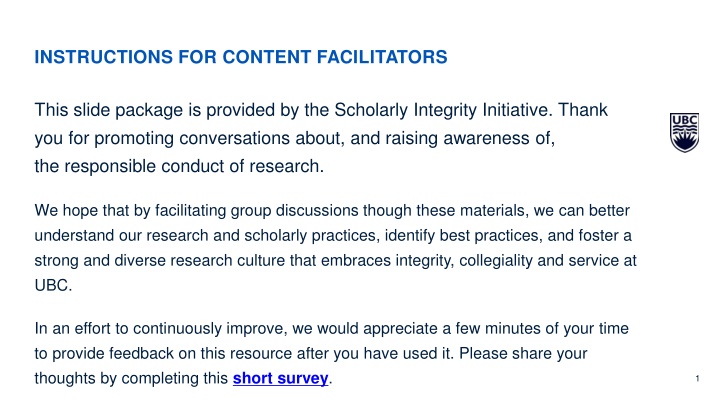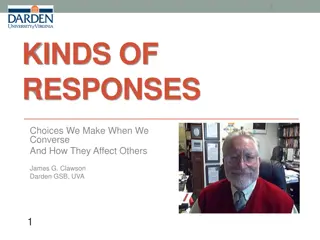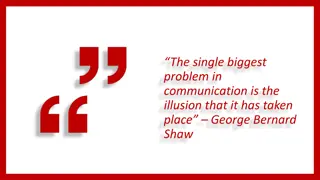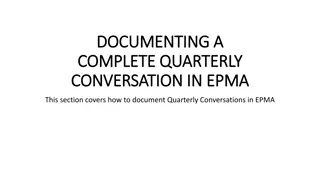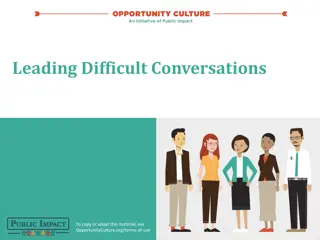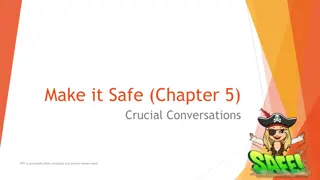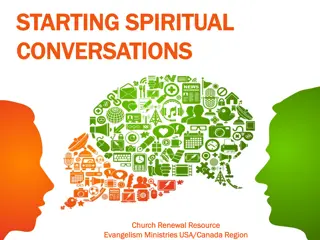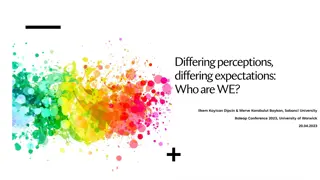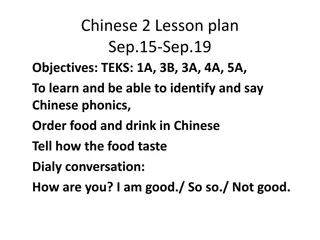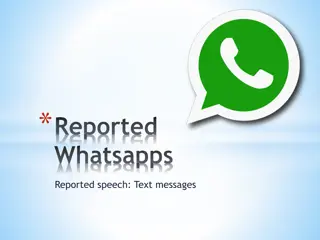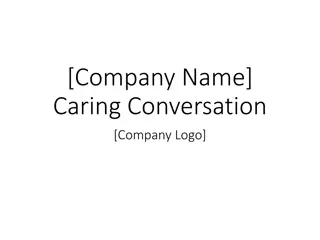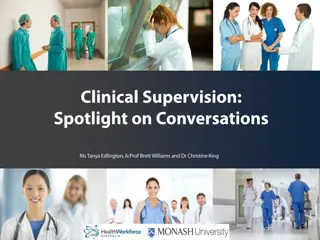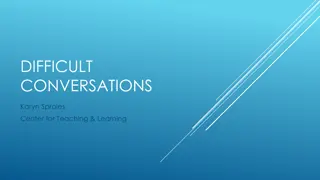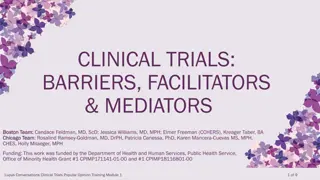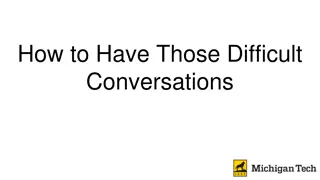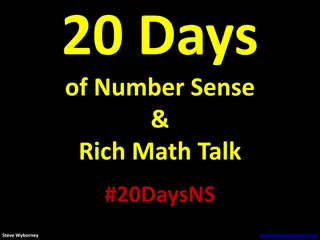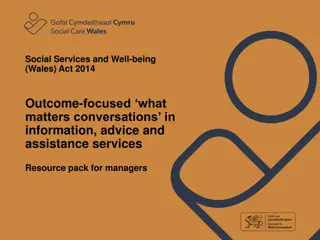Facilitators' Guide for Responsible Research Conversations
This slide package provided by the Scholarly Integrity Initiative aims to promote conversations and raise awareness about responsible research conduct. Facilitators can use the core slide presentation and additional slides to discuss terminology, generate discussions, and enhance understanding of research practices. The resource includes guidance on adapting and sharing the content, as well as information on conflicts of interest and commitment. Facilitators are encouraged to provide feedback to improve this resource.
Download Presentation

Please find below an Image/Link to download the presentation.
The content on the website is provided AS IS for your information and personal use only. It may not be sold, licensed, or shared on other websites without obtaining consent from the author.If you encounter any issues during the download, it is possible that the publisher has removed the file from their server.
You are allowed to download the files provided on this website for personal or commercial use, subject to the condition that they are used lawfully. All files are the property of their respective owners.
The content on the website is provided AS IS for your information and personal use only. It may not be sold, licensed, or shared on other websites without obtaining consent from the author.
E N D
Presentation Transcript
INSTRUCTIONS FOR CONTENT FACILITATORS This slide package is provided by the Scholarly Integrity Initiative. Thank you for promoting conversations about, and raising awareness of, the responsible conduct of research. We hope that by facilitating group discussions though these materials, we can better understand our research and scholarly practices, identify best practices, and foster a strong and diverse research culture that embraces integrity, collegiality and service at UBC. In an effort to continuously improve, we would appreciate a few minutes of your time to provide feedback on this resource after you have used it. Please share your thoughts by completing this short survey. 1
HOW TO USE THIS RESOURCE There are two sections to this slide deck resource. 1. The first section is a core slide presentation. Use this to introduce concepts, discuss terminology, and generate discussion with your audience. 2. The second section includes additional slides that you can add to the core presentation, depending on the needs of your audience. Facilitator notes are provided with each slide. Before delivering this material, you should familiarize yourself with the Scholarly Integrity Policy and the relevant scholarly standards within your discipline. If you need additional support, please contact the Scholarly Integrity Initiative. 2
ADAPTING AND SHARING THIS RESOURCE This introductory slide deck is licensed under the Creative Commons Attribution 4.0 International License, which allows you to share and adapt this resource as long as you give appropriate credit, provide a link to the license and indicate if changes were made to the content. For more information about this license, please visit: http://creativecommons.org/licenses/by/4.0/ Please attribute to the Scholarly Integrity Initiative, Office of the Vice-President, Research & Innovation, The University of British Columbia. 3
CONFLICTS OF INTEREST & COMMITMENT The Scholarly Integrity Initiative HTTPS://RESPONSIBLE.RESEARCH.UBC.CA
CONFLICTS OF INTEREST & COMMITMENT How do we identify real, perceived or potential conflicts? Why is it important to disclose conflicts? 5
CONFLICT OF INTEREST What is a conflict of interest? What are some types of conflicts of interest? By Made x Made, AU via Noun Project. CC BY 3.0 6
TYPES OF CONFLICT OF INTEREST Related Party Financial Interest Outside Activity Evaluating summer internship applications, including one from their child Being in a position to make a decision affecting a company or funding sponsor with whom they have been employed or received payment Being a member of an organization that is negotiating a lease agreement with UBC 7
CONFLICT OF COMMITMENT What is a conflict of commitment? What are some types of conflicts of commitment? 8
CONFLICT OF COMMITMENT Physical Resource Information & Data Human Resources Using your office boardroom to host a weekend meeting for a non-profit you volunteer with. Using information received because of your UBC role as a researcher and scholar to further your outside business activities. Asking technicians in your department to run an experiment for your start-up company or working on private consulting contracts from your UBC workspace. 9
CONFLICTS OF INTEREST & COMMITMENT How do we manage conflicts? How do these conflicts relate to scholarly integrity? 10
Maintaining an up-to-date declaration supports scholarly integrity by: Demonstrating responsibility, transparency and accountability Protecting researchers reputation and credibility Fostering public trust and confidence in research 11
Researchers and scholars are responsible for identifying, disclosing and managing conflicts in a timely, open, forthright, constructive and accountable manner to preserve the integrity of the people and processes involved in their research. What does this mean for us? 12
WHAT DOES THIS MEAN FOR US? Be able to recognize when a real or perceived conflict exists Avoid or minimize whenever possible; manage when they cannot be avoided. Be transparent and maintain an accurate, complete and up-to- date declaration What else? 13
SUPPORT & RESOURCES Policies & Guidelines Tri-Agency Conflict of Interest and Confidentiality UBC s Policy SC3: Conflict of Interest and Conflict of Commitment Policy Additional Resources Office of Research Ethics: US Financial Conflict of Interest Researcher s Checklist: Identifying Conflicts of Interest Staff Conflict of Interest Initiative University Counsel: Conflict of Interest and Conflict of Commitment Resource Hub 14
CONFLICT OF INTEREST occurs when aspects of our personal lives intersect or overlap with our UBC roles. Anything from our personal lives that might affect the decisions we make in our university roles can introduce a conflict. Office of the University Counsel 17
CONFLICT OF COMMITMENT occurs when university resources are used for non-university activities. University resources can include physical resources, information resources, or human resources. - Office of the University Counsel 18
CASE STUDIES 19
Professor Jones is a leading researcher in their field. They often hire undergraduate students to help with the research through the department s summer student internship program. Professor Jones daughter is a second-year undergraduate and is interested in pursuing research. Is it okay for Professor Jones to hire their daughter for a summer student internship position? 20
Emerson, a graduate student, joined a consulting company part- time to support their rising cost of living and help them take care of an aging parent. During their consulting work, they use and build upon their knowledge from their research and are required to work 20 hours a week, during business hours. Emerson is currently supported by a Tri-Agency research training award as a full-time student. Is there a conflict of interest or conflict of commitment? 21
